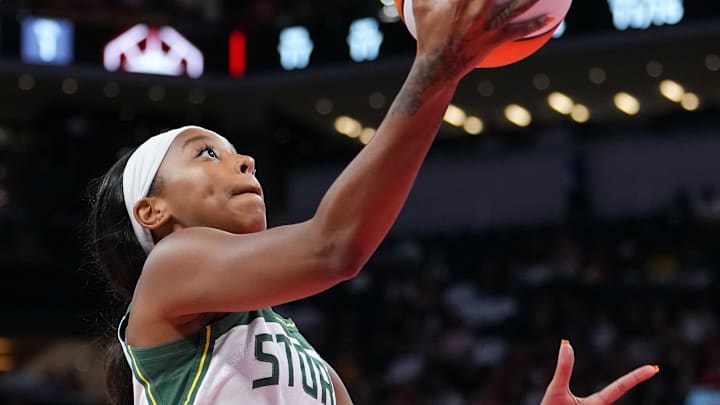At this point, it's no secret that CBA negotiations between the WNBA and the players aren't exactly going well. Both parties were hoping to lock in a new agreement by October 31, but last week the WNBA offered a 30-day extension, and the players accepted.
There are a myriad of issues on the table for both parties to sift through, but revenue sharing remains at the top of the list for both players. The athletes have proposed a new system of revenue sharing that would see the amount they are paid grow with the growth of the league, but the WNBA's leadership has offered a system that is similar to what is already in place (which includes a cap on how much players can earn).
In an interview on the "Big Take" podcast this week Bloomberg reporter Jennah Haque, "Good Game" host Sarah Spain and Seattle Storm Guard Lexie Brown broke down the current conversations and put things in NBA terms in an attempt to explain exactly what is stopping the parties from striking an agreement.
The biggest problem with the CBA is revenue sharing
Spain explained that first and foremost, WNBA players are currently getting less than 10% of total revenue — while their NBA counterparts receive 50%. The WNBA's leadership agrees that the players should be paid more, but is hoping to push a deal that includes "a predetermined rate" instead of tying revenue to growth.
In NBA terms, "Steph Curry is the highest paid NBA player, plays for the Warriors, and Jackie Young is one of the highest paid WNBA and Steph Curry makes 230 times as much money as Jackie Young," Spain also said. The issue is compounded by the fact that WNBA and NBA leadership appears unwilling to be transparent about the actual amount of money that the WNBA is bringing in, which makes it more difficult for players to advocate for themselves, and does little to put the outdated idea that the WNBA is not profitable to bed once and for all.
There is also another key difference between the leagues, Haque pointed out: while the NBA looks at "everything" — including ticket sales, concessions, and merch — as part of the league's overall revenue, the WNBA only focuses on money generated by the league.
"So the current collective bargaining agreement technically already has a revenue sharing provision. But unfortunately, because of really strict requirements that have been outlined in that CBA and because of really difficult thresholds that the league has to meet, the revenue sharing has never actually kicked in for the players," Haque said. "So even though it's been outlined in this CBA since 2020, players haven't actually seen a dime of that money go into their paychecks."
When it comes down to it, that's what players most want to change — and it's something they've been working without for five years. The entire interview is available at Bloomberg, and certainly worth a read from anyone who is still catching up on CBA news,
